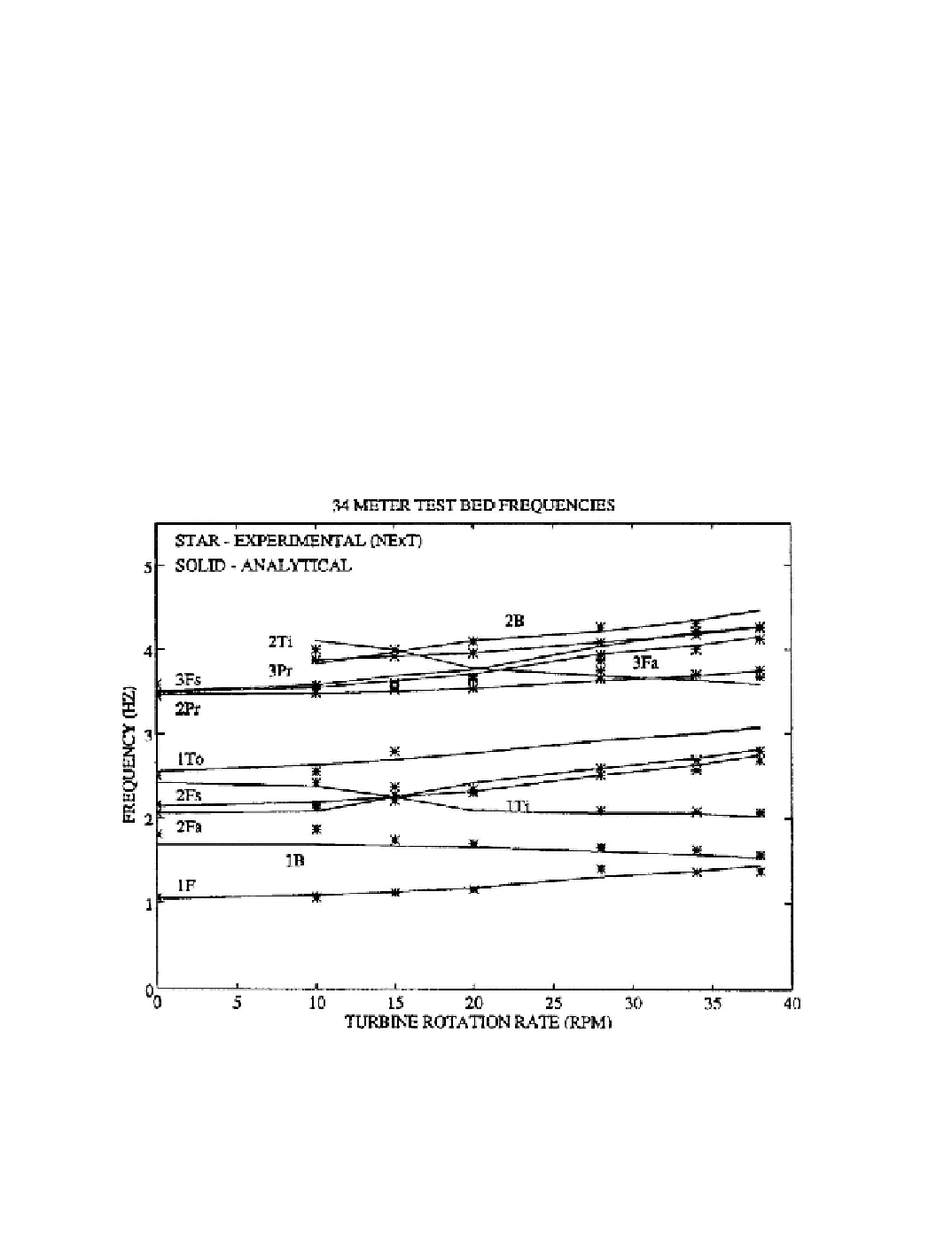Environmental Engineering Reference
In-Depth Information
Subsequent analysis suggested that these differences were due to a drag phenomenon
experienced as the largest cross-section of the blade oscillated normal to the stronger night-
time winds [James
et al.
1995]. This exercise showed the utility of performing modal test-
ing in an operating environment to allow the extraction of the total damping (structural and
aeroelastic). This test series also pointed out the reduced infrastructure associated with the
natural excitation test while clarifying the utility of traditional testing to separate out the dif-
ferent physical phenomena acting on wind turbine structures.
Application of NExT to a Rotating VAWT
The significant utility of wind excitation is the ability to extract structural dynamics in-
formation from a rotating system. NExT was used to extract modal frequency and damping
using data from the DOE/Sandia 34-m testbed during rotation at 0, 10, 15, 20, 28, 34, and 38
rpm. The wind speed during these tests was also approximately 10 m/s (22 mph). Twelve
strain gauges (accessed through slip rings) were used as the sensors in all of these analyses.
Time history length, sample rate, correlation block size, and the time domain analysis pa-
rameters were all the same as provided in the previous section. Figure 11-10 is a plot of the
rotation-rate dependent modal frequencies of this turbine from analysis and from experiment
using NExT.
Figure 11-10. Modal frequencies versus rotor rotation rate for the Sandia/DOE 34-m
VAWT.
[James
et al
. 1993]

Search WWH ::

Custom Search